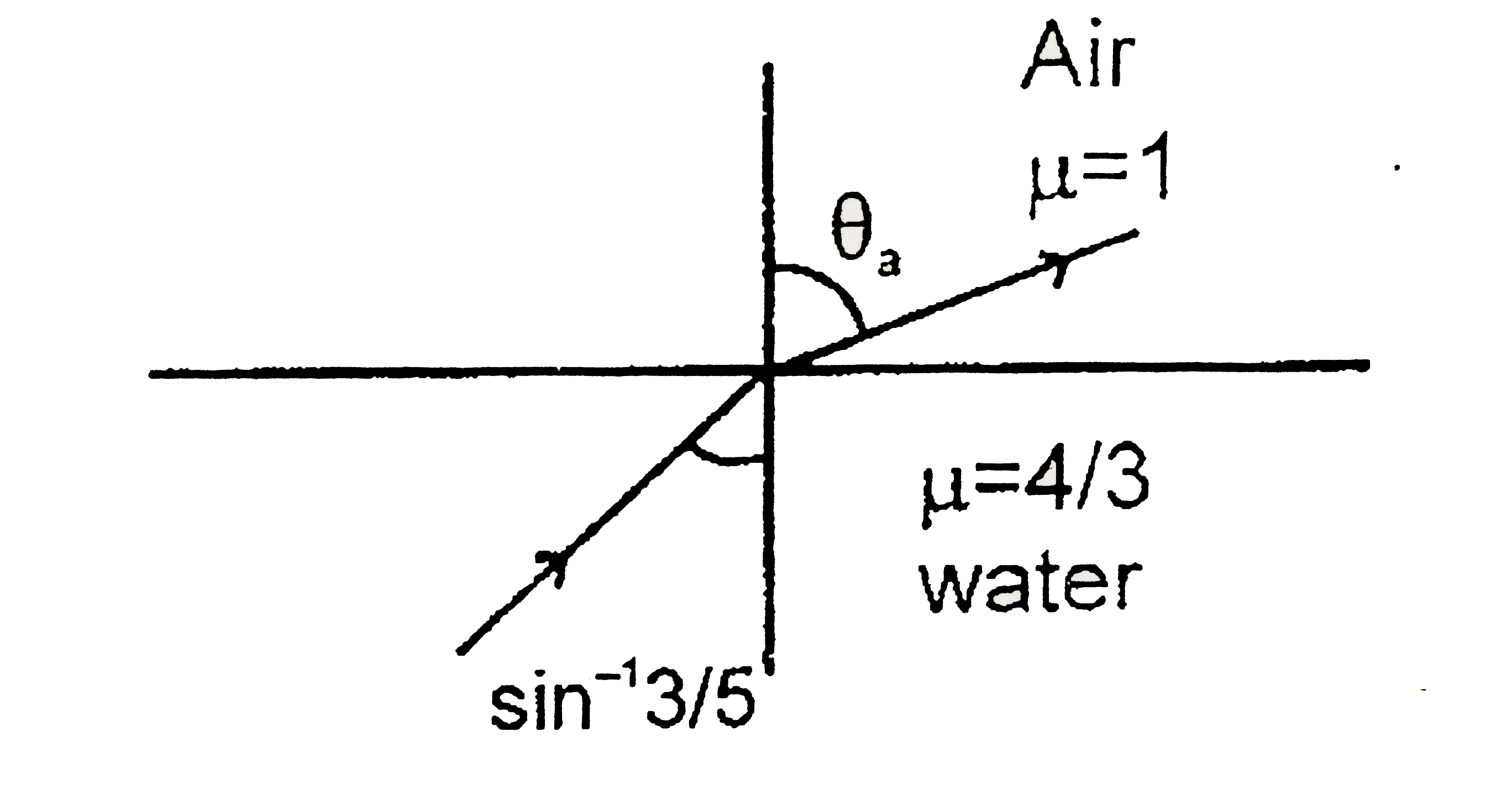An upolarized light beam is incident on a surface at an angle of incidence equal to Brewster's angle. Then,
the reflected and the refracted beam are both partially polarized
the reflected beam is partially polarized and the refracted beam is completely polarized and are at right angles to each other
the reflected beam is completely polarized and the refracted beam is partially polarized and are at right angles to each other
both the reflected and the refracted beams are completely polarized and are at right angles to each other.
The correct Answer is:C
To solve the problem regarding the behavior of an unpolarized light beam incident on a surface at Brewster's angle, we can follow these steps:
1. Understanding Brewster's Angle:
Brewster's angle (θ_B) is defined as the angle of incidence at which light with a particular polarization is perfectly transmitted through a transparent dielectric surface, with no reflection. It can be calculated using the formula:
tan(θB)=n2n1
where n1 is the refractive index of the first medium (usually air) and n2 is the refractive index of the second medium.
2. Incident Light Characteristics:
The light beam incident on the surface is unpolarized. Unpolarized light consists of waves vibrating in multiple planes.
3. Behavior of Light at Brewster's Angle:
When unpolarized light strikes the surface at Brewster's angle:
- The reflected light is completely polarized.
- The refracted light is partially polarized.
4. Angle Relationships:
At Brewster's angle, the reflected and refracted rays are perpendicular to each other. This means:
θB+θr=90∘
where θr is the angle of refraction.
5. Conclusion:
Therefore, when unpolarized light is incident at Brewster's angle:
- The reflected beam is completely polarized.
- The refracted beam is partially polarized.
- The reflected and refracted beams are at right angles to each other.
Final Answer:
The correct statement is:
- The reflected beam is completely polarized, and the refracted beam is partially polarized. Both beams are at right angles to each other.
---
Brewster's angle (θ_B) is defined as the angle of incidence at which light with a particular polarization is perfectly transmitted through a transparent dielectric surface, with no reflection. It can be calculated using the formula:
tan(θB)=n2n1
where n1 is the refractive index of the first medium (usually air) and n2 is the refractive index of the second medium.
The light beam incident on the surface is unpolarized. Unpolarized light consists of waves vibrating in multiple planes.
When unpolarized light strikes the surface at Brewster's angle:
- The reflected light is completely polarized.
- The refracted light is partially polarized.
At Brewster's angle, the reflected and refracted rays are perpendicular to each other. This means:
θB+θr=90∘
where θr is the angle of refraction.
Therefore, when unpolarized light is incident at Brewster's angle:
- The reflected beam is completely polarized.
- The refracted beam is partially polarized.
- The reflected and refracted beams are at right angles to each other.
The correct statement is:
- The reflected beam is completely polarized, and the refracted beam is partially polarized. Both beams are at right angles to each other.
Topper's Solved these Questions
- WAVE OPTICSBOOK - NCERT FINGERTPS ENGLISHCHAPTER - WAVE OPTICSEXERCISE - HIGHER ORDER THINKING SKILLS
8 Videos
- WAVE OPTICSBOOK - NCERT FINGERTPS ENGLISHCHAPTER - WAVE OPTICSEXERCISE - NCERT EXEMPLAR PROBLEMS
5 Videos
- SEMICONDUCTOR ELECTRONICS : MATERIALS , DEVICES AND SIMPLE CIRCUITS BOOK - NCERT FINGERTPS ENGLISHCHAPTER - SEMICONDUCTOR ELECTRONICS : MATERIALS , DEVICES AND SIMPLE CIRCUITS EXERCISE - Assertion And Reason
15 Videos
Similar Questions
A ray of light is incident on the surface of a glass plate at an angle of incidence equal to Brewster's angle ϕ. If μ represents the refractive index of glass with respect to air, then the angle between reflected and refracted rays is
View SolutionUnpolarized light of intensity I0 is incident on surface of a block of glass at brewster's angle. In that case, which one of the following statements is true-
View Solution
Knowledge Check
Unpolarized light is incident on a plane glass surface. The angle of incidence so that reflected and refracted rays and perpendicular to each other, then
Ataniβ=μ2Btaniβ=μCsiniβ=μDcosiβ=μ
An unpolarised light is incident upon a glass plate of refractive index 1.54 at Brewster's angle and gets completely plane polarised. The angle of polarisation is (given tan 57∘ = 1.54)
View SolutionUnpolarized light is incident on a plane glass surface. What should be the angle of incidence so that the reflected and refracted rays are perpendicular to eachother ?
View SolutionIn a prism of small angle A, a beam of light is incident on its surface at an angle of incidence i and leaves the opposite surface of it is angle of 90∘ with the surface. If prism material has refractive index of m then the value of angle of incidence will be:
View SolutionThe critical angle between a certain transparent medium and air is ϕ. A ray of light travelling through air enters the medium at an angle of incidence equal to its Brewster angle θ. Therefore, the angle of refraction is
View SolutionThe critical angle between a certain transparent medium and air is ϕ. A ray of light travelling through air enters the medium at an angle of incidence equal to its Brewster angle θ. Therefore, the angle of refraction is
View SolutionA light ray is incident on a glass sphere at an angle of incidence 60∘ as shown. Find the angles r,r1,e and the total deviation after two refractions.

View SolutionUnpolarized light is incident on a plane glass surface having refractive index . The angle of incidence at which reflected and refracted rays would become perpendicular to each other is :
View Solution
